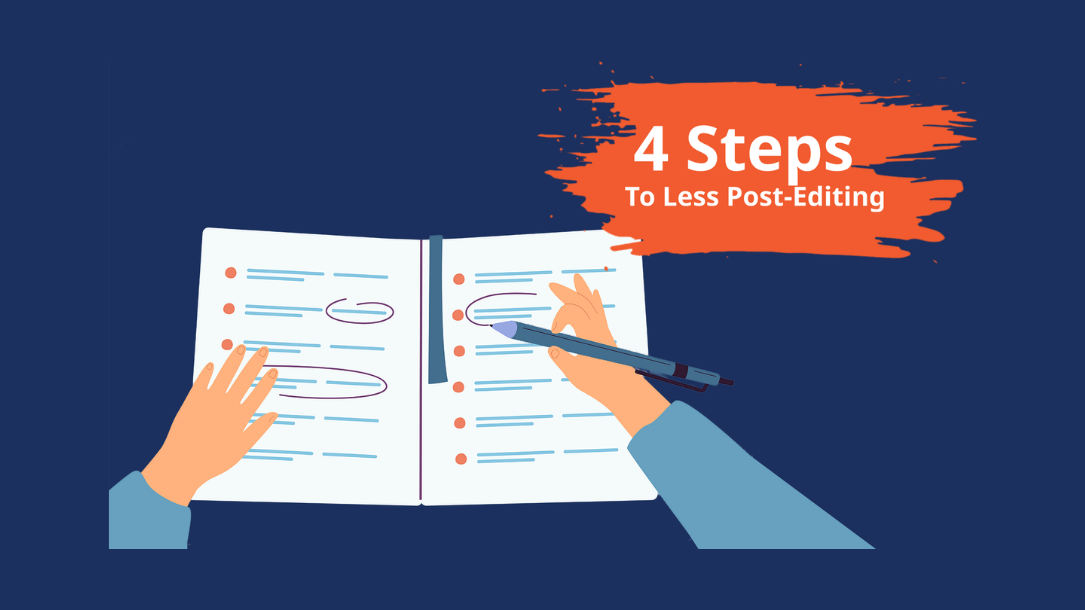Post-editing is a critical part of the process when you use Machine Translation (MT). In exchange for the speed, efficiency and friendly price tag of MT, you’ll have to spend some time reviewing and improving the text that is produced.
However, this does not mean post-editing has to become a major drain on time and resources. It should be done carefully and thoroughly, but there are steps you can take and strategies to implement ahead of time that minimize the effort.
As with almost anything in life, what you put in is directly related to what you get out. If you provide MT software with text that is well-written, easy to understand and straightforward, the translations will be stronger. Here are four tips and strategies for putting this advice into action, improving the quality of your MT and reducing the time you spend on editing.
SIMPLIFY YOUR TEXT
Writing for MT really just mimics the rules of good writing in general. Avoid text that is unnecessarily verbose in favor of clear, concise writing that gets to the point. Aside from being unnecessary, wordy language confuses MT.
More specifically:
- Avoid clichés – We’re all sick of them anyway, and chances are good that MT won’t understand them. The same goes for slang.
- Use the active voice – There’s no reason to say things like “A good time was had by all” when you can just say “We had a good time.”ble meanings will get lost in translation.
Keep in mind that simplifying your text doesn’t mean it won’t be impactful or powerful. Often, the exact opposite is true.
CHOOSE YOUR WORDS WISELY
Going one step further, give some detailed thought to necessary vs. unnecessary language. There are some words that don’t seem all that critical to us — simple articles or prepositions — that MT needs for proper translation. Even in a title, headline or subheading, for example, always use the word “the” before a noun. Instead of “take pills each morning” say “take the pills each morning.”
On the flip side, skip even common language patterns that are redundant. “Contact us for a quote” is perfectly clear and sufficient, while “Why don’t you contact us for a quote” includes unnecessary words. Redundancies are easily understood or overlooked in your native language, but they create confusion when translated.
PRE-EDIT
Maybe you’re not writing content from scratch for MT. Perhaps you have pre-existing marketing materials, product descriptions, patient or client instructions, or legal disclaimers that need to be translated as you enter new markets or work to comply with new regulations like GDPR.
This is where pre-editing comes into play. It might sound like a lot of extra legwork, but a little upfront editing will shave significant time from post-editing. Follow the tips above to simplify your content and eliminate localisms before you use MT.
USE A TRANSLATION MEMORY
Most writers avoid describing things the same way over and over. With MT, however, creativity leads to confusion. If you already have a translation memory (TM) — a resource that keeps track of sentences that have already been translated — use that language instead of trying to come up with new text.
The more translation memories you can incorporate into your MT, the more accurate and uniform results will be.
THE PAYOFF
If you carefully construct your text with simplicity and readability in mind, the post-editing process will be easier and your MT results stronger.
Combining effective MT with pre- and post-editing is a translator’s best defense against less-than-perfect output and tough deadlines.

